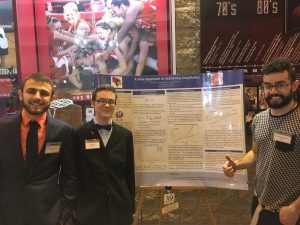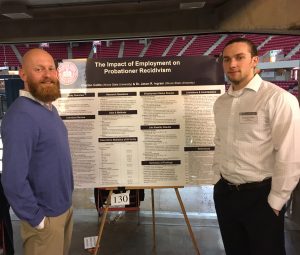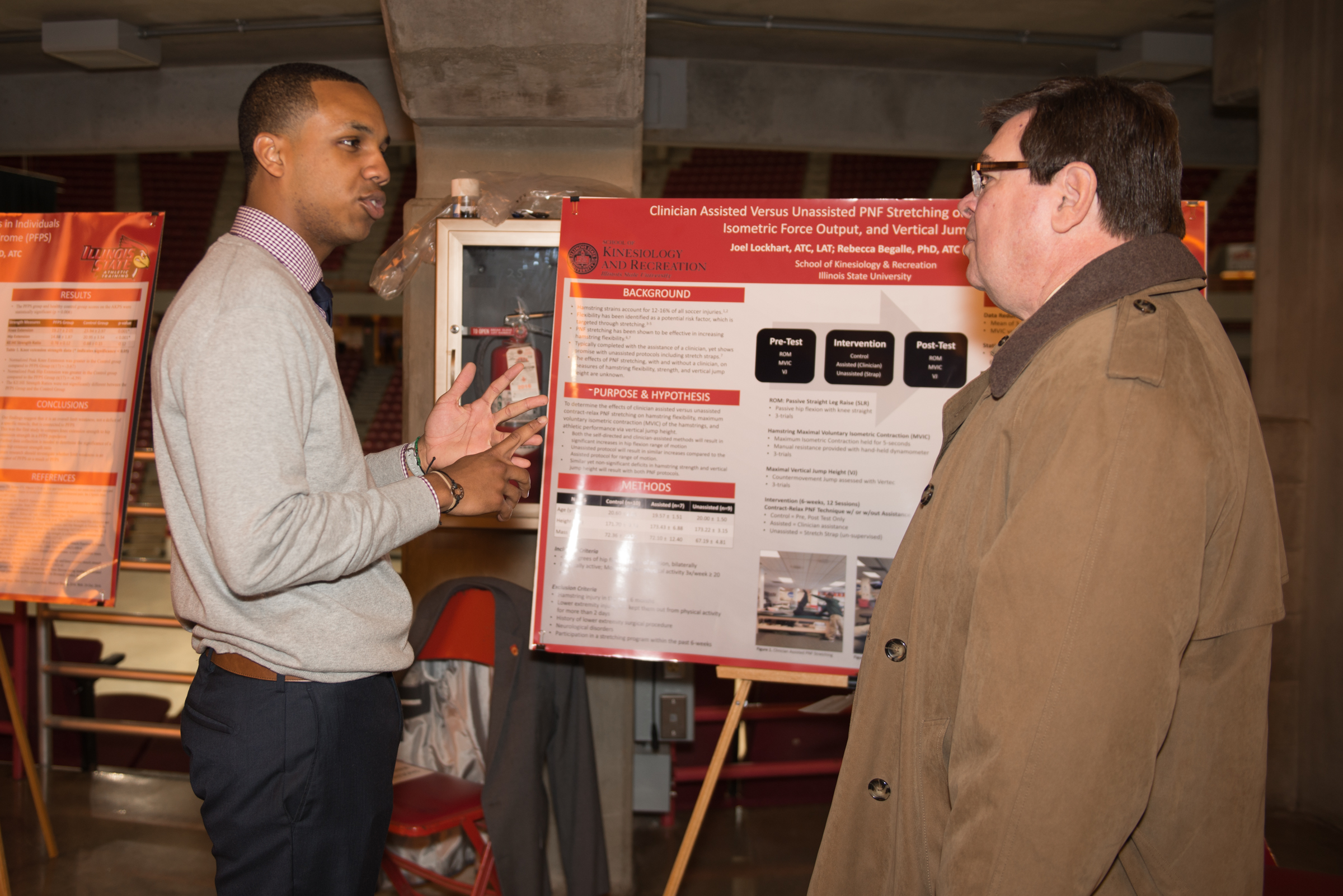Santiago Pinto’s physics research is so complicated it’s difficult even to grasp the title of his scholarly work: “Diagonalizing the Field Theory Hamiltonian.” (See explanation at the bottom of this story.) The goal of the research, however, is easier to understand.
Pinto and fellow student researchers Cory Russ and Joshua Henderson are working under Physics Professor Neil Christensen to develop a new method to identify particles produced by the Large Hadron Collider in Switzerland.
“The particles are very small. So it’s very hard to see them colliding against each other and to see what comes out of those collisions,” said Pinto, a sophomore from Bogota, Colombia. “So we use computer programs to do that. And there is some method that predicts the outcomes of the scattering at big scales, called perturbation theory.”
This older method sometimes lacks the computational power needed to quickly discover these new particles. “Our method is different, and it’s pretty fast,” Pinto said.

Santiago Pinto (right) with fellow researchers Joshua Henderson (left) and Cory Russ at the University Research Symposium
Pinto was one of 426 students—working under the guidance of 137 faculty mentors—who presented their research Friday, March 31, at the annual University Research Symposium in Redbird Arena.
The event, organized by the Graduate School, featured graduate and undergraduate students from across campus presenting research posters and explaining their work to attendees. There were also oral and panel presentations of student work hosted by the Department of Physics, the Department of Sociology and Anthropology, and the School of Theatre and Dance.
“The University Research Symposium is a culmination of the important research that students and mentors work on throughout the year,” said Graduate School Director Amy Hurd. “It is a terrific learning experience for the students, and the faculty grow as mentors and as researchers themselves.”
https://www.instagram.com/p/BST5x7hFLor/?taken-by=alexiseconie
Christensen’s research is notable in a couple of ways. For one, he is using undergraduate students, like Pinto, for work usually conducted by graduate or postdoctoral researchers. Second, his research team’s method is unique, though many scientists around the world have the same goal.
“We are all trying to calculate the scattering probability—what’s the probability that two protons collide and scatter into a Higgs boson and a proton or a neutron, or whatever? That’s the central question: How to do that calculation? Because if we do that calculation really well, we might find new particles in the Large Hadron Collider,” Christensen said. “And if we discover those particles, they can give us information about what the fundamental laws of physics are, about space and time possibly because they might be evidence of supersymmetry or extra dimensions of space, different things like this. It’s really exciting to be able to discover those.”
Christensen said the symposium is important because the students get to see what their colleagues and the faculty are researching: “In addition, giving these presentations or the posters gives the students the opportunity to see the big picture of what they are doing and gives them an opportunity to present. That’s really important in building their careers.”

Criminal Justice Sciences Professor Jason Ingram and master’s student Clayton Cottle at the University Research Symposium
Graduate student Clayton Cottle ’15 participated in his third symposium this year. Cottle has been analyzing recidivism data from the Piatt County Probation Office since he was an undergraduate Honors student in the Department of Criminal Justice Sciences.
The office’s director, Kyle Reynolds ’90, an alumnus of the department, provided Illinois State researchers with the records of 943 anonymous individuals from 2007–2011. The goal of the research is to help the probation office find ways to reduce the chances probationers reoffend.
Through his research, Cottle discovered that people who had a job when they were released from probation and were able to maintain steady work over the next two years were less likely to get in trouble again. This finding prompted Piatt County judges to start requiring defendants sentenced to probation to have a job or be actively seeking one.
Cottle’s faculty mentor, Criminal Justice Science Professor Jason Ingram, said he gives student researchers like Cottle access to the county’s records so they get the opportunity to work with real-world data and see that it has practical applications.
“It’s really a great opportunity for the students,” Cottle said.
Ingram said the symposium is valuable for the students: “It’s a way to get what they are doing in the class out to the community.”
Check out what #RedbirdScholars shared from the symposium on social media:
https://storify.com/kevinbersett/research-symposium
Hamiltonian explainer
Neil Christensen explains “Diagonalizing the Field Theory Hamiltonian”:
“The Hamiltonian is a mathematical equation that includes all of the physical laws involved in the process. The Hamiltonian is a matrix—that’s an array of numbers, so you have rows and columns of numbers. When we diagonalize that, we turn that matrix into another matrix—another array of numbers— where everything is zero except for the diagonal entries. And those things are nonzero. So that is the diagonalization part. The importance of this is that once you do this, those diagonal entries represent the energies of physical states. And there are something associated with those called vectors; those are just a column array of numbers. That thing represents the state that has that energy. And those states might correspond to the protons that are colliding or to the states coming out of the collision. So by doing this diagonalization, we obtain information about the colliding states that we can use to calculate this probability.”
Kevin Bersett can be reached at kdberse@IllinoisState.edu.

